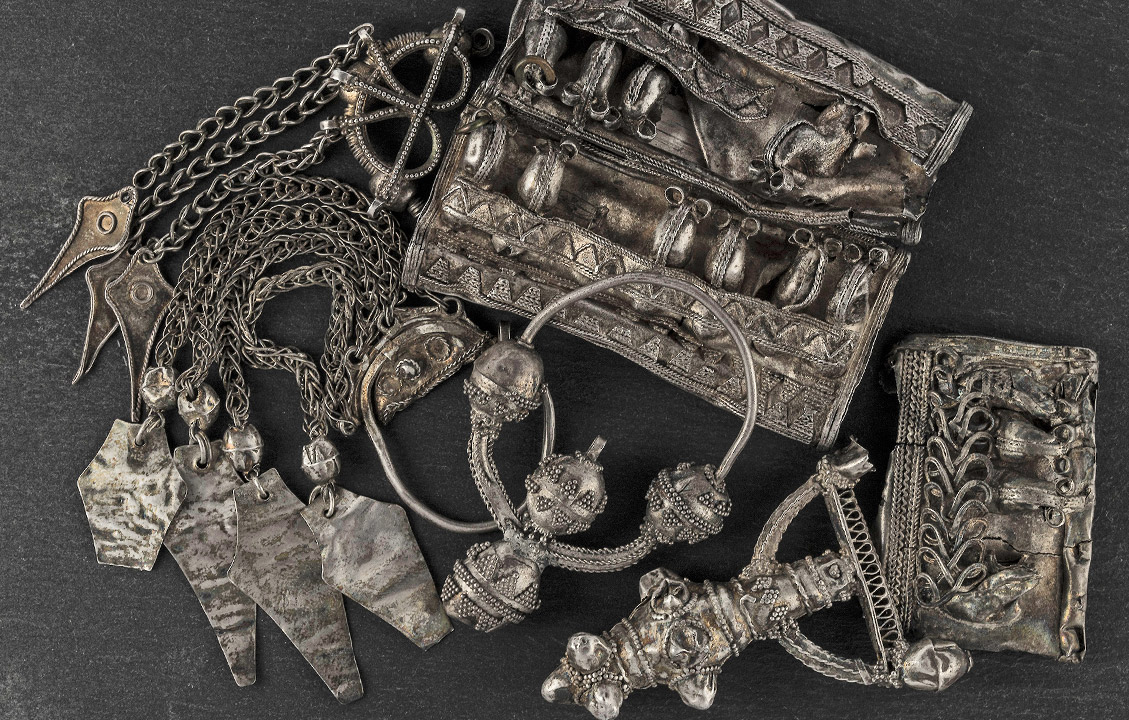
Exhibition curator: Kateriny Zisopulu-Bleja
Can historical events from over one thousand years back have any meaning for a modern Pole? They surely can, because at that time Poland first emerged in Europe as an important political subject. That was overwhelmingly due to our rulers, but Greater Poland played a major part as well, since it was this region that provided support for their activities whose aim was the creation of a state. If later the term POLONIA denoted both the whole country and the original domain of Mieszko I, it also meant commemorating the area where all had begun – since it was here that Poland was born.
Our exhibition invites our guests to participate in an archaeological journey into the Middle Ages, to meet the people and events of the period. The guides of that particular trip will be the eyewitnesses – old chroniclers and travellers whose reports illustrate the subject in question on panels placed on the walls of the exhibition rooms. More detailed information can be found on pulled-out boards – there our guests will find a description of various aspects of the mediaeval life, a result of many years of scientific research. Boxes next to the display cases contain additional information and collections of source materials relevant to the topic. In Room II you can make use of numerous multimedia presentations, and at the end of the visit you are invited to try on a replica of a late mediaeval suit of armour and play a game of chess. Each section of the exhibition is accompanied by sound effects: sounds of nature and music from the Middle Ages.
The country and the people
Modern locations shown on large format photographs make us aware how close are the historical events that took place many centuries ago in the environs that can still be admired in the Greater Poland region. Human settlements and cultivated fields in the neighbourhood of impenetrable forests constituted the everyday life of the Middle Ages. Ever-present nature, beautiful and awe-inspiring, was felt in every area of life and had a particular impact on pagan religious beliefs. Farming and animal husbandry, almost totally self-sufficient, required a great amount of work. The artefacts assembled at the exhibition show the effects of agricultural and craft production, tools and final products. They all come from the 6th – 12th cent. Greater Poland. The film presented at the exhibition helps us follow the heroes of the mediaeval world in their everyday toil.
Fortified settlements and the organisation of the society
We enter the battlefield, welcomed by the Piast dynasty warriors. The Polish state emerged out of tribal wars which often brought to an end the first early mediaeval strongholds. The artefacts include the militaria and exclusive objects that show the past prominence of these centres. Later-day fortified settlements, creations of the early Piast state, were powerful fortresses surrounded with wood-earthwork fortifications and performed political, military, religious and social as well as prestigious functions. The setting of one of the first stone ducal residences – the interior of the palatium in Lednica – introduces the momentous event of the year 1000: the Gniezno meeting. We can see the figures of emperor Otto III and Bolesław Chrobry presented in the symbolic gesture of handing over to the Polish duke the insignia of power, the imperial diadem and the spear of St Maurice. At that time Poland showed herself as a rich and modern state and her ruler as worthy of the crown. The exhibits presented in this section are among the most precious collections of artefacts dating to the mediaeval Poland. Many of them, especially the silver jewellery and the militaria, are true works of art. The wealth of the Piast Poland is also visible in the collection of numismatic objects, including the first coins of domestic production.
The church and the monastery
The replica of the Gniezno Doors, presenting the life of St Wojciech (Adalbert), the first Polish martyr and the patron of Poland, is a symbolic passage between the worlds of power and spirituality, so much interwoven at those times. Greater Poland was a major centre of propagation of the Christian faith. First churches were built here, followed by monasteries of the oldest orders – the Benedictines and the Cistercians. The central part of the exhibition shows models of sacred constructions in stone and brick and photographs of one of the most precious objects of Greater Poland’s mediaeval art – the late-14th cent. polychrome on the walls of St James’ oratory in the Cistercian monastery in Ląd on the Warta river. The painting includes biblical scenes and scenes showing the founders of the building.
A reconstructed 11th century skeletal grave offers the visitors a chance to observe changes in funerary rituals and gives the opportunity to test their archaeological skills.
Monastic communities of Black and Grey Friars (the Dominicans and the Franciscans), closely linked with the urban centres developing in the 13th century, introduce the visitors into the late mediaeval world.
The town and the castle
The last section of the exhibition carries us back into the world of the late Middle Ages. Of particular importance at the time was the reign of Przemysł II, the last ruler of the Greater Piast lineage, who by his coronation in 1295 reconstituted the Polish Kingdom. In the following years Greater Poland, still claiming a leading role in the country with a decisive voice about its structure, enjoyed a period of greatness. Towns, centres of the development of crafts, trade, of spiritual and cultural life, played an important part in human settlement, economy and often in politics. Castles were the places where the culture of chivalry flourished. The most magnificent was the royal castle in Poznań, a witness to many important events of the period. The exhibits here reveal the masterly skills of the late mediaeval craftsmen who bestowed functional objects – pottery, stove tiles, leather and bone goods and the militaria – with unique quality and beauty.